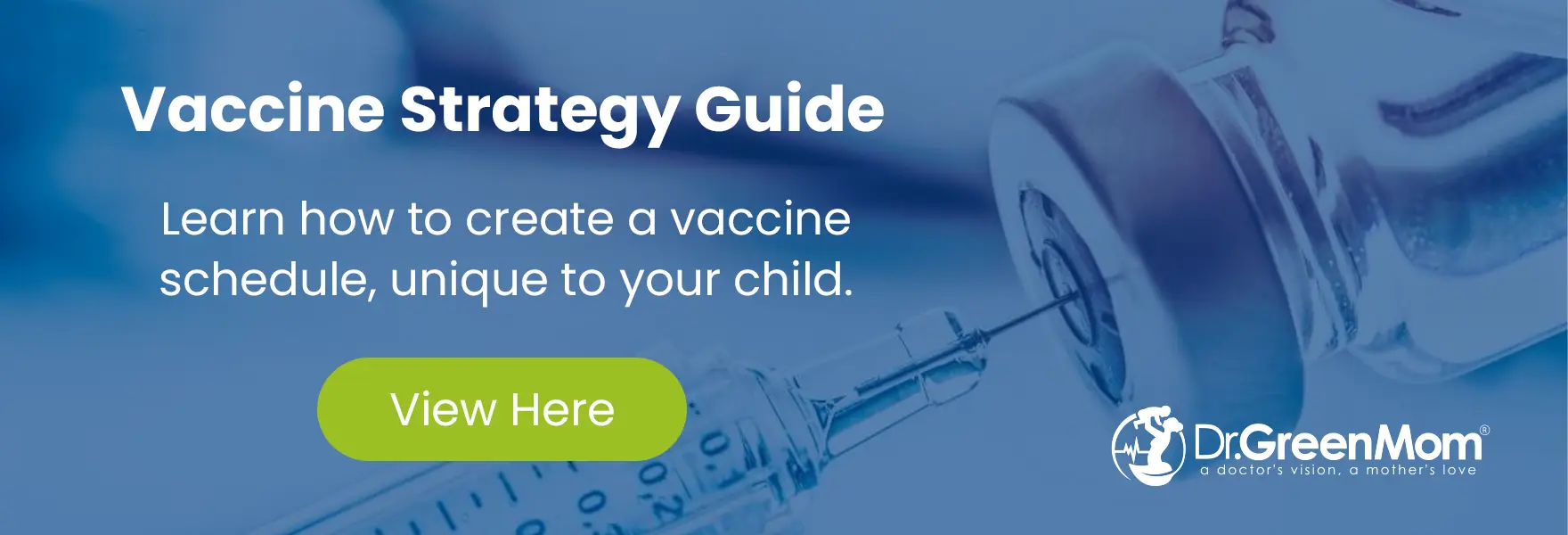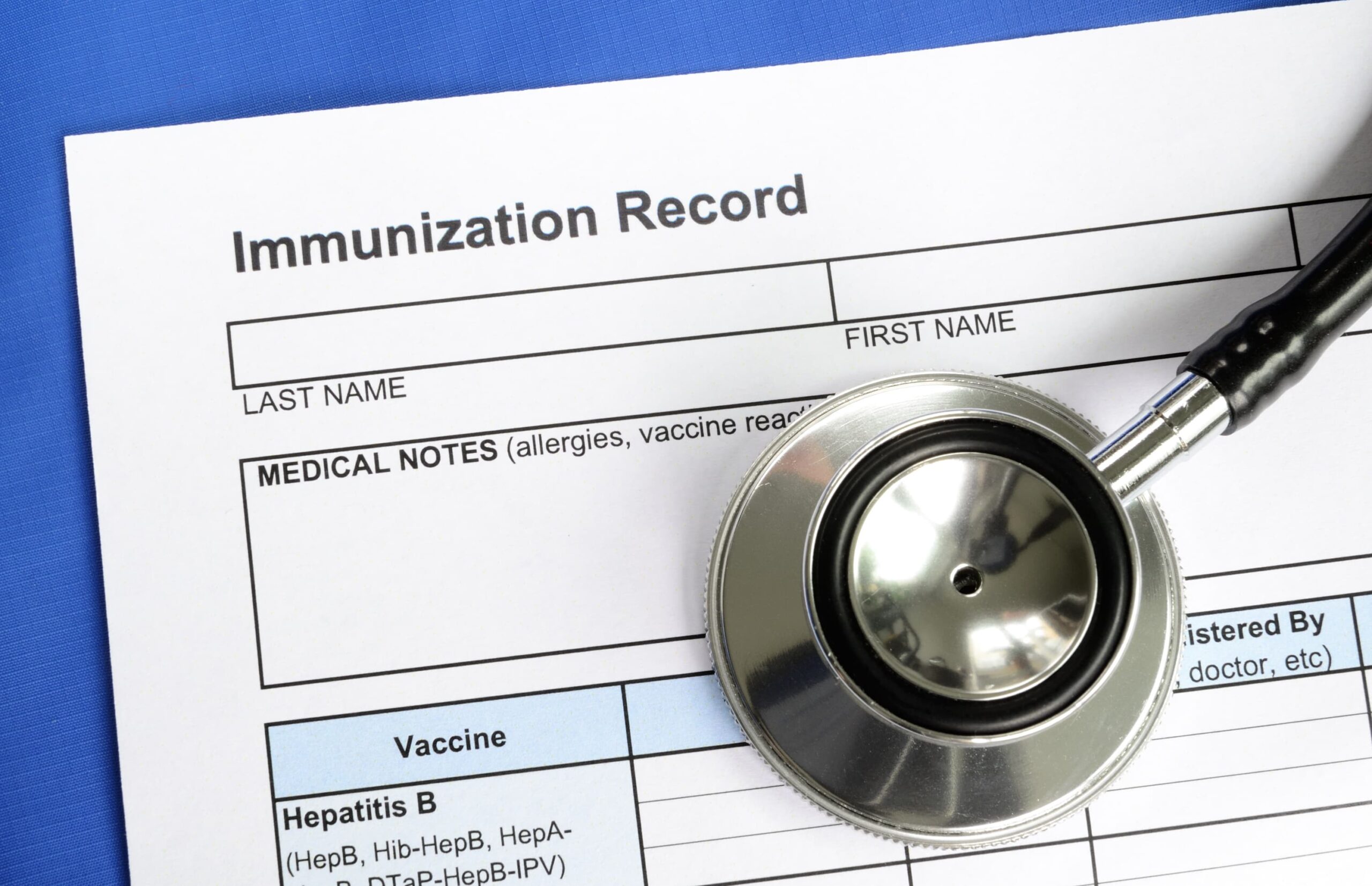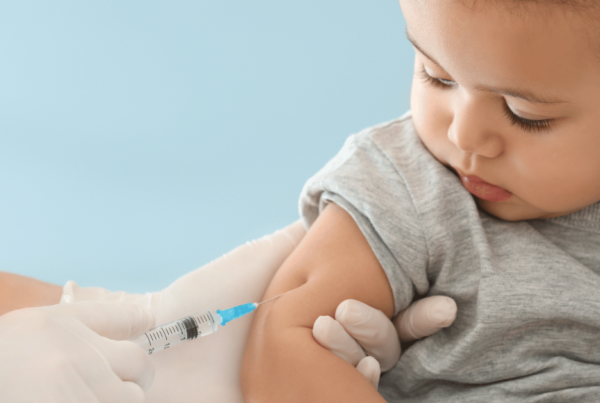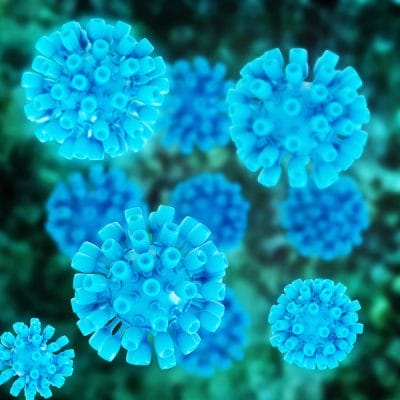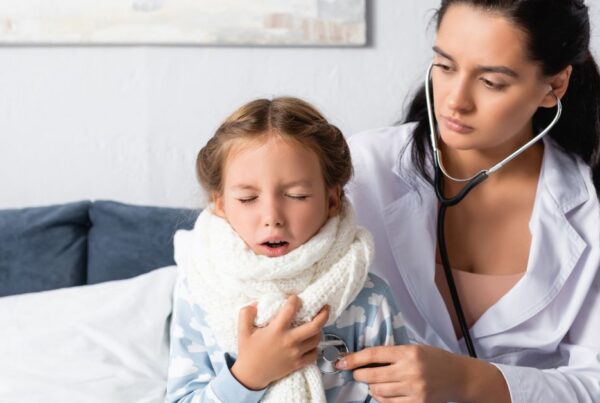- What Is Haemophilus Influenzae & Hib?
- What Is Hib?
- How Does Hib Spread?
- Hib Symptoms
- Risk Factors For Severe Or Serious Hib Infection
- Conventional Treatment Of Hib
- How Common Is Hib?
- Available Hib Vaccines
- When Is A Hib Vaccine Given?
- Efficacy & Duration Of Protection
- Ingredients In Hib Vaccines
- Hib Vaccine Package Inserts
- Hib Vaccine Reactions
- Who Should Not Get The Hib Vaccine?
- FAQ: Combination Shots VS. Separated Shots - Which Is Best For My Family?
- FAQ: PedvaxHIB - Why Do You Need Less Doses?
- Controversy & The Hib Vaccine
- The Bottom Line & Hib Vaccine
What Is Haemophilus Influenzae & Hib?
Haemophilus influenzae is a type of bacteria that can cause a variety of different illnesses that range from mild to severe (1). These illnesses include:
- Otitis Media (middle ear infection)
- Bronchitis (chest cold)
- Pneumonia
- Bloodstream infection
- Meningitis
- Epiglottitis (swelling of the throat)
- Cellulitis (deep skin infection)
- Infectious arthritis
Note: Despite its name, Haemophilus influenzae doesn’t cause the flu. When it was discovered in 1892, scientists thought it caused influenza because they found the bacteria in patients with the flu and believed it was the main cause of the illness, naming it Bacillus influenzae (later called Haemophilus influenzae). However, research during the 1918 flu pandemic showed that influenza is actually caused by a virus and not bacteria. This led to the misnamed bacteria still carrying the legacy of that early mistake (2). If you’re wondering why H. influenzae was found in patients with the flu, it is because it is a common secondary infection that co-occurs with certain viral infections like the flu (3).
What Is Hib?
Hib, or Haemophilus influenzae type b, is one specific strain of Haemophilus influenzae that is known for causing serious infections, especially in young children under 5 years of age. While there are six types of H. influenzae (a through f) and non-typeable strains, Hib is the most dangerous and is the target of the Hib vaccine.
For the rest of this eBook, we’ll be referring to Hib specifically instead of H.influenzae.
How Does Hib Spread?
Hib is spread by coming in contact with respiratory droplets spread through coughing or sneezing or by close contact with a person infected with Hib.
Hib is a bacteria that can live in people’s noses and throats without causing illness; however, if it spreads to other body parts (like the lungs), it can cause infection. Prior to the introduction of the Hib vaccine, Hib was found in the noses and throats of 0.5-3% of healthy infants (4). People who carry this bacteria, but who aren’t sick (called carriers), can spread it to others who then become ill.
Hib is an infection that is possible to get more than once (1).
Hib Symptoms
Hib causes different symptoms depending on which part of the body is infected. For the most part, Hib symptoms are indistinguishable from other bacterial infections of the same body parts and testing would be required to identify Hib as the cause.
Symptoms of Hib Pneumonia
- Cough
- Chest Pain
- Shortness of breath or trouble breathing
- Fever
- Headache
- Muscle pain
- Excessive tiredness (5)
Symptoms of Hib Bloodstream infection (bacteremia)
- Fever
- Fatigue
- Stomach pain
- Diarrhea
- Nausea
- Vomiting
- Anxiety
- Confusion
- Shortness of breath or trouble breathing (5)
Hib Meningitis Symptoms
Sudden onset of:
- Fever
- Headache
- Stiff neck
- Light sensitivity
- Nausea
- Vomiting
- Confusion
- Irritability (infants)
- Poor feeding (infants)
- Appear slow or lethargic (infants) (5)
Hib Otitis Media Symptoms (Ear Infection)
- Ear pain
- Red swollen ear drum
- Fever
- Fatigue/sleepiness (5)
Hib Bronchitis Symptoms (Airway infection – aka Chest Cold)
- Coughing (with or without mucus)
- Fatigue
- Headache (mild)
- Body aches (mild)
- Sore throat (5)
Complications of Hib infections can result in sepsis, long-term consequences (brain damage or hearing loss from meningitis, loss of limbs from bloodstream infections), or even death. Complications are rare for mild infections like bronchitis and otitis (5).
The case-fatality rate of invasive Hib disease* is 2%–5%, despite appropriate antimicrobial therapy (4).
*Invasive Hib disease includes pneumonia, bacteremia, meningitis, epiglottitis, septic arthritis, cellulitis, purulent pericarditis, endocarditis, and osteomyelitis (6).
Risk Factors For Severe Or Serious Hib Infection
While anyone can get a Hib infection at any point in their life, some people have a higher risk of infection and of severe outcomes. In terms of age, children under 5 and adults over 65 are at highest risk and children under 1 specifically have the highest rates of infection (7). However, infants under 6 months do get some protection from antibodies passed through the placenta and breast milk (4).
Certain ethnicities are at risk for more severe Hib infection outcomes: African American or Black children, Alaska Native children, and American Indian children (7). Alaska Native and American Indian children are at particularly high risk with 11 times the rate of H. influenza and 23 times the rate of Hib infections as compared to all other races combined (8).
Medical conditions and treatments that impact the immune system’s ability to fight off disease increase the risk of severe outcome from Hib infection. These include treatments like immunosuppressive drugs, organ transplant medication, certain cancer medications, etc., and conditions like asplenia, HIV, sickle cell disorder, and others (7).
Conventional Treatment Of Hib
Because Hib is a bacterial infection, it is typically treated with antibiotics. Supportive care like rest, hydration, and comfort are usually required. For more serious infections, breathing support, wound care, blood pressure medication, and more may be required (1).
How Common Is Hib?
Hib vaccines have been incredibly successful in decreasing the rates of Hib, which has dropped an estimated 99% in kids less than 5 years of age (9).
According to the most recent analysis that we have, in the 7-year period from 2009-2015 there were a total of 545 cases of invasive H. influenza disease in children under 5. Of this total, only 23 of these children had Hib, the vaccine preventable strain of H.influenza (8).
- 2 of these children were too young to have received the Hib vaccine
- 6 were unvaccinated
- 10 were under-vaccinated
- 8 of the under-vaccinated had received the 3-dose series but were missing the booster
- 5 were vaccinated according to the CDC schedule
- 2 were 3-month-old infants who had only their first dose of the Hib vaccine
During the same period, there were 54 cases of Hib in different age groups (8).
- 9 were aged 5-17
- 28 were aged 18-64
- 17 were aged 65+
More recent numbers for invasive Hib disease in children under 5 are higher, this is because in 2015, the case definition was changed to include cases detected by PCR assays. PCR assays use DNA analysis and are more sensitive than the older culture-based isolation and antigen detection method and therefore pick up more cases (6,10,11).
According to data pulled from the National Notifiable Disease Surveillance System, here are the numbers of invasive Hib cases in children under five years old in the most recent years reported:
- 2016: 30 cases (12)
- 2017: 33 cases (13)
- 2018: 38 cases (14)
- 2019: 18 cases (15)
- 2020: 15 cases (16)
- 2021: 27 cases (17)
- 2022: 17 cases (18)
You can check up-to-date statistics at National Notifiable Disease Database.
Globally, over 90% of countries have a Hib vaccination program (19). If you’re visiting countries without strong Hib vaccination programs, the risk of Hib increases. You can check up-to-date information about international infectious disease risk using the CDC Yellow Book website.
Available Hib Vaccines
ActHIB
- Protects against Hib only
- Approved for 2 months – 5 years of age
Hiberix
- Protects against Hib only
- Approved for 6 weeks – 4 years of age (prior to 5th birthday)
PedvaxHIB
- Protects against Hib only
- Approved for 2 – 71 months of age
- Note: this vaccine is preferred for those at higher risk for Hib
Pentacel
- Combo vaccine; protects against Hib + diphtheria, tetanus, pertussis, polio
- Approved for 6 weeks – 4 years of age (prior to 5th birthday)
- Note: Poliovirus for vaccines can be grown using Vero cells (derived from the kidney cells of an African green monkey) or MRC-5 cells (derived from human embryonic lung fibroblasts). If you have a preference, you can ask your doctor to review the vaccine’s package insert to determine which cell line was used and request the option you prefer.
VAXELIS
- Combo vaccine; protects against Hib + hepatitis B, diphtheria, tetanus, pertussis, polio
- Approved for 6 weeks – 4 years of age (prior to 5th birthday)
- Note: poliovirus is grown using Vero cells
When Is A Hib Vaccine Given?
The CDC recommends a Hib vaccine series for all children under 5 years of age.
Routine Vaccination
ActHIB, Hiberix, Pentacel, or Vaxelis: A 4-dose series, with doses at:
- 2 months
- 4 months
- 6 months
- A booster dose at 12–15 months
Note: Vaxelis is not recommended for use as a booster dose. A different Hib-containing vaccine should be used for the booster dose.
PedvaxHIB: A 3-dose series, with doses at:
- 2 months
- 4 months
- A booster dose at 12–15 months
American Indian and Alaska Native Infants: Vaxelis and PedvaxHIB are preferred over other Hib vaccines for the primary series.
Efficacy & Duration Of Protection
Hib conjugate vaccines are very effective at activating the immune system. Over 95% of infants develop protective antibodies after completing the initial vaccine series. These vaccines are estimated to prevent invasive Hib disease with an effectiveness of 95% to 100%. As a result, serious Hib infections are very rare in children who are fully vaccinated (4).
Ingredients In Hib Vaccines
ActHIB
- Hib sugar + tetanus toxoid complex
- Sucrose sugar
- Saline solution
- Formaldehyde (less than 0.5 mcg per dose)
- Milk-derived raw materials (casein derivatives)
Hiberix
- Hib sugar + tetanus toxoid complex
- Lactose sugar
- Saline solution
- Formaldehyde (less than 0.5 mcg per dose)
PedvaxHIB
- Hib sugar + neisseria protein complex
- Saline solution
- Aluminum – 225 mcg
Pentacel
- Diphtheria toxoid
- Tetanus toxoid
- Acellular pertussis antigens (pertussis toxin, filamentous hemagglutinin, pertactin, fimbriae types 2 and 3)
- Inactivated polioviruses (Type 1, Type 2, Type 3)
- Hib sugar + tetanus toxoid complex
- Aluminum phosphate – 1.5 mg of aluminum phosphate which provides 0.33 mg of aluminum
- Polysorbate 80
- 2-Phenoxyethanol
- Sucrose sugar
- Formaldehyde (less than 7 mcg per dose)
- Glutaraldehyde (less than 50 ng)
- Bovine serum albumin (less than 10 ng)
- Streptomycin sulfate (less than 0.0001 pg)
- Neomycin (less than 0.01 pg)
- Polymyxin B sulfate (less than 0.000001 pg)
VAXELIS
- Diphtheria toxoid
- Tetanus toxoid
- Acellular pertussis antigens (pertussis toxin, filamentous hemagglutinin, pertactin, fimbriae types 2 and 3)
- Inactivated polioviruses (Type 1, Type 2, Type 3)
- Polyribosylribitol phosphate (PRP)
- Hib sugar + neisseria protein complex
- Hepatitis B surface antigen
- Aluminum salts – 319 mcg
- Polysorbate 80 <0.0056%
- Formaldehyde ≤14 mcg per dose
- Glutaraldehyde ≤50 ng per dose
- Bovine serum albumin ≤50 ng per dose
- Neomycin <5 ng per dose
- Streptomycin sulfate <200 ng per dose
- Polymyxin B sulfate <25 ng per dose
- Ammonium thiocyanate ≤0.125 μg per dose
- Yeast protein ≤0.1 mcg per dose
Hib Vaccine Package Inserts
- ActHIB
- Package Insert – Hiberix
- Liquid PedvaxHIB® – [Haemophilus b Conjugate Vaccine (Meningococcal Protein Conjugate)]
- Pentacel – (inactivated poliovirus component grown in Vero cells)
- VAXELIS
Hib Vaccine Reactions
Most people who receive the Hib vaccine experience only mild side effects, which usually go away quickly. Common reactions at the injection site include redness, swelling, or pain, and these happen in 5% to 30% of people. These side effects usually resolve within 12 to 24 hours. Less commonly, some children may experience fever or irritability, but these reactions are rare. According to reports to the Vaccine Adverse Event Reporting System (VAERS), the most common side effects after the Hib vaccine are fever (31%), crying (11%), redness at the injection site (11%), irritability (10%), and rash (9%). These reactions typically occur 1 day after the vaccine. The rate of side effects from Hib vaccines is similar to that of other childhood vaccines, and no unusual safety concerns have been found. A study also found that children who received a combination vaccine with Hib (DTaP-IPV/Hib) had a slightly higher risk of fever compared to those who received a different DTaP vaccine without Hib, but no serious health issues were linked to the combination vaccine (4).
Who Should Not Get The Hib Vaccine?
As with other vaccines, people should not get a Hib vaccine if they have had a life threatening allergic reaction after getting a Hib vaccine or if they have a severe allergy to any part of a Hib vaccine.
It is worth noting that some of the Hib vaccines contain trace amounts of common allergens like casein (in the case of dairy allergy) and bovine serum, vero cells, and mrc-5 cells (in the case of meat allergy caused by alpha-gal syndrome following Lyme Disease). Most people with mild allergies will be fine with the vaccines, but people with severe allergies should avoid them. Speak with your doctor for individualized guidance.
Additionally, the Hib vaccine should not be given if the child has a fever or acute infection.
FAQ: Combination Shots VS. Separated Shots – Which Is Best For My Family?
One of the most common questions that I get is: is it better to do a combo shot or to separate each shot out individually. There are pros and cons to each option.
Combo shots:
- Pros: combining multiple vaccines into one injection reduces number of visits, amount of total downtime after vaccination, is cost effective, and sometimes may decrease exposure to adjuvants.
- Cons: because there are multiple different vaccines in one injection there is less flexibility in choices. Some sources have theorized that combo shots may have a slightly higher risk of side effects than individual shots, but an extensive metanalysis from 2012 indicates that the side effects from combo and individual shots are not significantly different (19).
Individual shots:
- Pros: more flexibility in choosing which vaccines you’d like to get.
- Cons: multiple injections mean multiple visits, more costs, potentially more exposure to adjuvants, and possibly more days feeling irritable and unwell after shots.
When it comes to Hib vaccines specifically, safety and efficacy are very similar between combo and individual vaccines (19,20).
FAQ: PedvaxHIB – Why Do You Need Less Doses?
Because of its formulation, PedvaxHIB produces a stronger immune response than the other Hib vaccines and research has shown that children need less doses to provide an equivalent immune response.
Specifically, PedvaxHIB is conjugated to a neisseria protein complex rather than a tetanus toxoid protein and it also contains 225 mcg of aluminum as an adjuvant to boost immunogenicity.
Controversy & The Hib Vaccine
Association Between Hib Vaccine & Insulin Dependent Diabetes?
The relationship between Haemophilus influenzae type b (Hib) vaccination and type 1 diabetes has been debated for years. Early evidence pointing to the possibility of type 1 diabetes occurring after vaccination in general and Hib vaccination in particular included:
- Observations of type 1 diabetes occurring in clusters approximately 3 years after vaccination (21).
- Rodent studies showing that vaccination timing could affect diabetes type 1 development (2).
- The observation that type 1 diabetes rates are lower in countries without vaccination programs and that they increased over time with the introduction of vaccination programs (2).
However, when this question has been looked into on a large scale in a 2015 systematic review covering 13,323 children with type 1 diabetes, researchers didn’t find a link with vaccination (2). At present, the most reliable evidence suggests that there isn’t a link between type 1 diabetes and vaccination, though the authors of the systematic review point out some limitations in the research that has been done so far and urge more study particularly into the timing of vaccines as animal studies indicate this might be important (22).
Read more about the meta-analysis here: Vaccinations and childhood type 1 diabetes mellitus: a meta-analysis of observational studies.
The Bottom Line & Hib Vaccine
The Hib vaccines help protect children under 5 from infections caused by haemophilus influenzae type b. These infections can range from mild ear infections to severe pneumonia or meningitis. When the full series is completed, this vaccine is estimated to be 95% effective (4).
Hib vaccines are available as either single vaccines or combination vaccines. When deciding between combo shots and individual vaccines, these are similar in safety and efficacy.
Children may experience mild side effects like irritability or pain at the injection site, while serious side effects are very rare. People allergic to the vaccines or any ingredient shouldn’t be vaccinated.
The number of doses your child needs depends on their age and the vaccine formulation used.
References:
- Centers for Disease Control and Prevention. (2024). About Haemophilus influenzae Disease. Cdc.gov. https://www.cdc.gov/hi-disease/about/index.html
- Taubenberger, J. K., Hultin, J. V., & Morens, D. M. (2007). Discovery and characterization of the 1918 pandemic influenza virus in historical context. Antiviral therapy, 12(4 Pt B), 581–591.
- Floret D. (1997). Co-infections virus-bactéries [Virus-bacteria co-infections]. Archives de pediatrie : organe officiel de la Societe francaise de pediatrie, 4(11), 1119–1124. https://doi.org/10.1016/s0929-693x(97)88982-8
- Centers for Disease Control and Prevention. Epidemiology and Prevention of Vaccine-Preventable Diseases. Hamborsky J, Kroger A, Wolfe S, eds. 14th ed. Washington D.C. Public Health Foundation, 2021. Chapter 8: Haemophilus influenzae. https://www.cdc.gov/pinkbook/hcp/table-of-contents/chapter-8-haemophilus-influenzae.html
- Centers for Disease Control and Prevention. (2024). Haemophilus influenzae Disease Symptoms and Complications. Cdc.gov. https://www.cdc.gov/hi-disease/symptoms/index.html
- CDC National Notifiable Diseases Surveillance System. (2021). Haemophilus Influenzae, Invasive Disease: 2015 Case Definition. Ndc.services.cdc.gov. https://ndc.services.cdc.gov/case-definitions/haemophilus-influenzae-invasive-disease-2015/
- Centers for Disease Control and Prevention. (2024). Risk Factors for Haemophilus influenzae Disease. Cdc.gov. https://www.cdc.gov/hi-disease/risk-factors/index.html
- Soeters, H. M., Blain, A., Pondo, T., Doman, B., Farley, M. M., Harrison, L. H., Lynfield, R., Miller, L., Petit, S., Reingold, A., Schaffner, W., Thomas, A., Zansky, S. M., Wang, X., & Briere, E. C. (2018). Current Epidemiology and Trends in Invasive Haemophilus influenzae Disease-United States, 2009-2015. Clinical infectious diseases: an official publication of the Infectious Diseases Society of America, 67(6), 881–889. https://doi.org/10.1093/cid/ciy187
- MacNeil, J. R., Cohn, A. C., Farley, M., Mair, R., Baumbach, J., Bennett, N., Gershman, K., Harrison, L. H., Lynfield, R., Petit, S., Reingold, A., Schaffner, W., Thomas, A., Coronado, F., Zell, E. R., Mayer, L. W., Clark, T. A., & Messonnier, N. E. (2011). Current epidemiology and trends in invasive Haemophilus influenzae disease–United States, 1989-2008. Clinical infectious diseases: an official publication of the Infectious Diseases Society of America, 53(12), 1230–1236. https://doi.org/10.1093/cid/cir735
- CDC National Notifiable Diseases Surveillance System. (2021). Haemophilus Influenzae, Invasive Disease: 1997 Case Definition. Ndc.services.cdc.gov. https://ndc.services.cdc.gov/case-definitions/haemophilus-influenzae-invasive-disease-1997/
- Mills, N., Best, E. J., Murdoch, D., Souter, M., Neeff, M., Anderson, T., Salkeld, L., Ahmad, Z., Mahadevan, M., Barber, C., Brown, C., Walker, C., & Walls, T. (2015). What is behind the ear drum? The microbiology of otitis media and the nasopharyngeal flora in children in the era of pneumococcal vaccination. Journal of paediatrics and child health, 51(3), 300–306. https://doi.org/10.1111/jpc.12710
- Centers for Disease Control and Prevention. National Notifiable Diseases Surveillance System, 2016 Annual Tables of Infectious Disease Data. Atlanta, GA. CDC Division of Health Informatics and Surveillance, 2017. Available at: https://www.cdc.gov/nndss/data-statistics/infectious-tables/index.html.
- Centers for Disease Control and Prevention. National Notifiable Diseases Surveillance System, 2017 Annual Tables of Infectious Disease Data. Atlanta, GA. CDC Division of Health Informatics and Surveillance, 2018. Available at: https://www.cdc.gov/nndss/data-statistics/infectious-tables/index.html.
- Centers for Disease Control and Prevention. National Notifiable Diseases Surveillance System, 2018 Annual Tables of Infectious Disease Data. Atlanta, GA. CDC Division of Health Informatics and Surveillance, 2019. Available at: https://www.cdc.gov/nndss/data-statistics/infectious-tables/index.html.
- Centers for Disease Control and Prevention. National Notifiable Diseases Surveillance System, 2019 Annual Tables of Infectious Disease Data. Atlanta, GA. CDC Division of Health Informatics and Surveillance, 2021. Available at: https://www.cdc.gov/nndss/data-statistics/infectious-tables/index.html.
- Centers for Disease Control and Prevention. National Notifiable Diseases Surveillance System, 2020 Annual Tables of Infectious Disease Data. Atlanta, GA. CDC Division of Health Informatics and Surveillance, 2023. Available at: https://www.cdc.gov/nndss/data-statistics/infectious-tables/index.html.
- Centers for Disease Control and Prevention. National Notifiable Diseases Surveillance System, 2021 Annual Tables of Infectious Disease Data. Atlanta, GA. CDC Office of Public Health Data, Surveillance, and Technology, 2024. Available at: https://www.cdc.gov/nndss/data-statistics/infectious-tables/index.html.
- Centers for Disease Control and Prevention. National Notifiable Diseases Surveillance System, 2022 Annual Tables of Infectious Disease Data. Atlanta, GA. CDC Office of Public Health Data, Surveillance, and Technology, 2024. Available at: https://www.cdc.gov/nndss/data-statistics/infectious-tables/index.html.
- Slack, M., Esposito, S., Haas, H., Mihalyi, A., Nissen, M., Mukherjee, P., & Harrington, L. (2020). Haemophilus influenzae type b disease in the era of conjugate vaccines: critical factors for successful eradication. Expert review of vaccines, 19(10), 903–917. https://doi.org/10.1080/14760584.2020.1825948
- Klein, N. P., Abu-Elyazeed, R., Cheuvart, B., Janssens, W., & Mesaros, N. (2019). Immunogenicity and safety following primary and booster vaccination with a hexavalent diphtheria, tetanus, acellular pertussis, hepatitis B, inactivated poliovirus and Haemophilus influenzae type b vaccine: a randomized trial in the United States. Human vaccines & immunotherapeutics, 15(4), 809–821. https://doi.org/10.1080/21645515.2018.1549449
- Classen, J. B., & Classen, D. C. (2002). Clustering of Cases of Insulin Dependent Diabetes (IDDM) Occurring Three Years After Hemophilus Influenza B (HiB) Immunization Support Causal Relationship Between Immunization and IDDM. Autoimmunity, 35(4), 247–253. https://doi.org/10.1080/08916930290028175
- Morgan, E., Halliday, S. R., Campbell, G. R., Cardwell, C. R., & Patterson, C. C. (2016). Vaccinations and childhood type 1 diabetes mellitus: a meta-analysis of observational studies. Diabetologia, 59(2), 237–243. https://doi.org/10.1007/s00125-015-3800-8
Reviewed/Updated: 03/25
Content Created: 06/14

